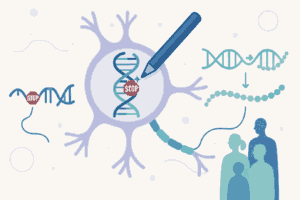Author: Enric Vidal
One of the many unanswered questions in the field of animal prion diseases is whether the prions that cause Chronic CWD (Chronic CWD) are the same as the prions that cause CWD.Chronic wasting disease), whether they are capable of infecting humans or not. Following the jump from mad cow prions to humans, this is a major concern in North America, and more recently in northern Europe as well, where the disease is circulating in wild and domestic cervid populations.
The good news is that unlike mad cow prions, the vast majority of experimental studies, conducted with transgenic mice expressing the human prion protein or in non-human primates, indicate that humans are not susceptible to human prions. bles to deer prions. However, the techniques of in vitro amplification The Protein Mapping Analysis Centre (known as PMCA) has shown that the human prion protein can be misfolded from CWD prions.
bles to deer prions. However, the techniques of in vitro amplification The Protein Mapping Analysis Centre (known as PMCA) has shown that the human prion protein can be misfolded from CWD prions.
Distribution of CWD outbreaks in North American deer. Source USGS.
Society is becoming increasingly aware of the use of experimental animals, so science has developed a new model to study the ability of prions to infect humans that does not require the use of animals.brain organoids. They consist of small clusters of nerve cells generated from human induced pluripotent stem cells. By using certain growth factors, these stem cells can differentiate into the cells that form the human nervous system, but in a cell culture dish, so that, with certain limitations, they represent a model of infection much closer to a human brain than any transgenic mouse and without the need to use animals.
In this study, these human brain organoids have been generated and inoculated with different types of CWD prions. These organoids have previously been shown to be susceptible to infection by human prions (such as those causing Creutzfeldt Jacob disease). After long incubations, no evidence of infection could be demonstrated in any of the human brain organoids inoculated with cervid prions. Thus, this study adds to many previous studies showing that there is a strong transmission barrier between deer prions and humans.
Although the limitations of the model do not allow us to rule out the zoonotic potential of cervid prions (there are still many CWD strains to be analysed, other human genotypes, etc.), these results are good news, especially because of the development of new infection models that allow us to obtain information without the need to use animals.
You can access the full study here.



